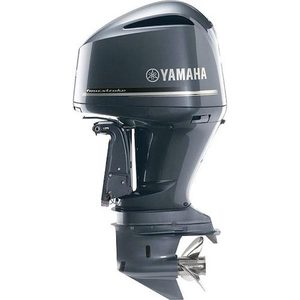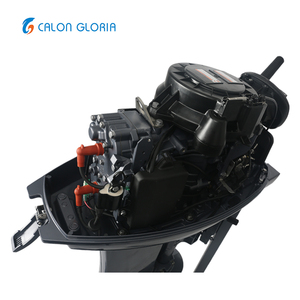(10458 products available)


















































































































































































Yamaha marine engines are powerful and dependable engines utilized to control vessels and give a smooth and productive sailing experience. These engines are designed to be fuel-efficient and environmentally friendly, with lower emissions and noise levels. There are various types of Yamaha marine engines, including:
Yamaha also offers 4-stroke and 2-stroke marine engines. The 4-stroke cycle engine is designed to burn fuel very efficiently, producing less noise and fewer emissions. These features make 4-stroke cycle engines ideal for leisure fishing and cruising. The 2-stroke cycle engine has a simpler design with fewer moving parts, making it lighter and more compact. The 2-stroke cycle engine generates more power for its size and is commonly used in applications requiring high power output, such as racing.
Regular Oil Changes
Yamaha's marine engine maintenance schedule recommends oil changes after every 100 hours of use or once a year, whichever comes first. This keeps the engine lubricated and protects its moving parts from wear and tear. Boat owners should use the recommended oil grade for their engine size. The oil filter must also be replaced at every interval.
Cooling System Care
The cooling system should be checked routinely for proper operation. On models using raw water from lakes or oceans, the cooling passages need flushing with freshwater after every use. This prevents salt or minerals from building up. Yamaha also sells flushing kits for easy maintenance.
Fuel System Inspection
Yamaha advises inspecting fuel lines and connections for leaks or cracks periodically. Any issues should be addressed immediately to avoid fire hazards. Using the correct octane rating stated in the owner's manual is important for optimal engine performance.
Spark Plug Replacement
Spark plugs should be examined at regular intervals and changed when worn out or after a set number of operating hours, as specified in the maintenance manual. Fresh plugs ensure reliable starting and smooth engine running.
Propeller Care
Yamaha recommends inspecting propellers for damage like dents or cracks. Even minor issues can lower fuel efficiency and engine performance. Props should be cleaned of any marine growth or debris that could affect their operation.
Annual Dealer Service
Yamaha advises having an authorized dealer perform comprehensive service once a year. Technicians will thoroughly inspect, test, and tune all engine systems. They also check safety equipment and do any needed repairs. This ensures the marine engine runs reliably and safely.
There are several factors to consider when choosing a Yamaha marine engine, whether for personal use or retail business. These factors include:
Performance
When it comes to performance, users need to consider the type of waterbody and its dimensions. For instance, if the engine is to be used in a larger waterbody, a more powerful engine that can provide higher speeds and better fuel efficiency is needed. On the other hand, in a smaller waterbody, a less powerful engine that offers better control and maneuverability will suffice.
Fuel type
Yamaha marine engines use either diesel or gasoline. Diesel engines are more fuel efficient and have a longer lifespan. They also provide more torque, making them suitable for larger boats. However, they have a higher initial cost and are noisier compared to gasoline engines. On the other hand, gasoline engines have a lower initial cost, are quieter, and have a faster boat speed. The choice between the two will depend on the boat size and the user's preference.
Maintenance and reliability
Reliability is a crucial factor when choosing a Yamaha marine engine. The engine should be dependable to prevent breakdowns or failures during critical times. Additionally, users need to consider the maintenance requirements of the engine. Some engines require more frequent maintenance and servicing than others. Choosing an engine with low maintenance requirements and easily accessible components for periodic maintenance is important.
Environmental regulations
Environmental regulations impose restrictions on exhaust emissions and noise levels. It is important to choose a Yamaha marine engine that complies with the local environmental regulations to avoid penalties and contribute to environmental sustainability.
Before carrying out any DIY work on a Yamaha outboard engine, always read the service manual for specific instructions. With that in mind, here are some general steps for replacing a Yamaha marine inboard engine.
Preparation
Disconnect the battery and drain the engine oil and cooling fluids. Then, connect the hoist to the engine and assess the lifting points.
Remove the Engine Covers
Remove the cowlings and other protective covers to expose the engine.
Disconnect the Engine Connections
Disconnect all the connections related to the boat's systems. This includes electrical connections, fuel lines, and cooling systems. Also, disconnect the control cables and communications networks.
Mount the Hoist and Lift the Engine
Once all the connections have been disconnected, mount the hoist on the lifting points and lift the engine out of its mounting position.
Remove the Engine Mounts
After the engine is lifted, remove the engine mounts and any other components holding the engine in place.
Install the New Engine
Place the new engine on the mounts and connect all the previously disconnected systems. These include the exhaust, cooling, electrical, fuel, and steering systems.
Reconnect the Engine Covers
Once the new engine is installed, reconnect the cowlings and any other protective covers.
Final Checks
Perform a thorough check to ensure everything is in place and there are no leaks. Then, reconnect the battery and follow the manual's break-in procedure for the new engine.
Q1: How long do Yamaha marine engines last?
A1: Yamaha marine engines can last for decades. However, the longevity of these engines will depend on several factors. These include the frequency of use, the level of maintenance, and the operating conditions.
Q2: Can Yamaha marine engines be modified?
A2: Yes, Yamaha marine engines can be modified. Modifications can be done to improve performance or to meet specific requirements. However, if any modifications are done, they should be done by certified professionals.
Q3: What is the warranty period for Yamaha marine engines?
A3: The warranty period for Yamaha marine engines varies with the specific engine model. Normally, the warranty period ranges from 1 to 3 years. Users should read the warranty conditions and provisions to get more information.